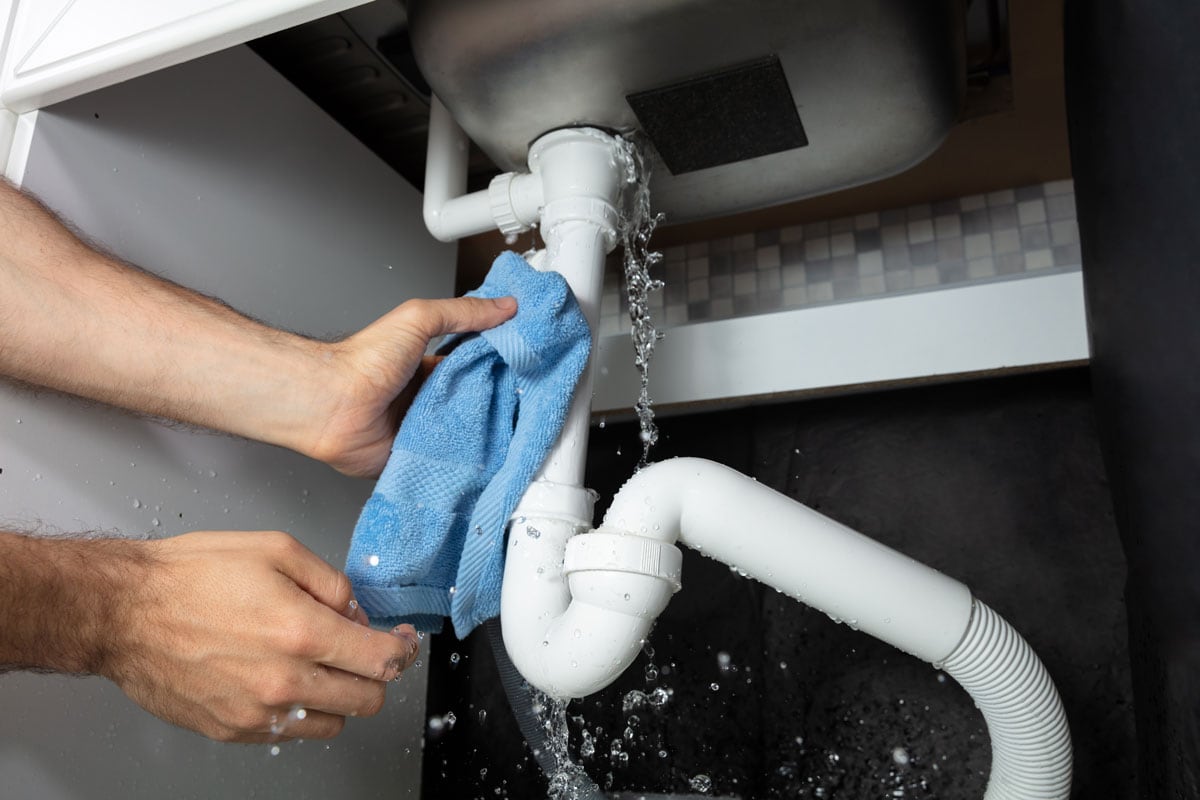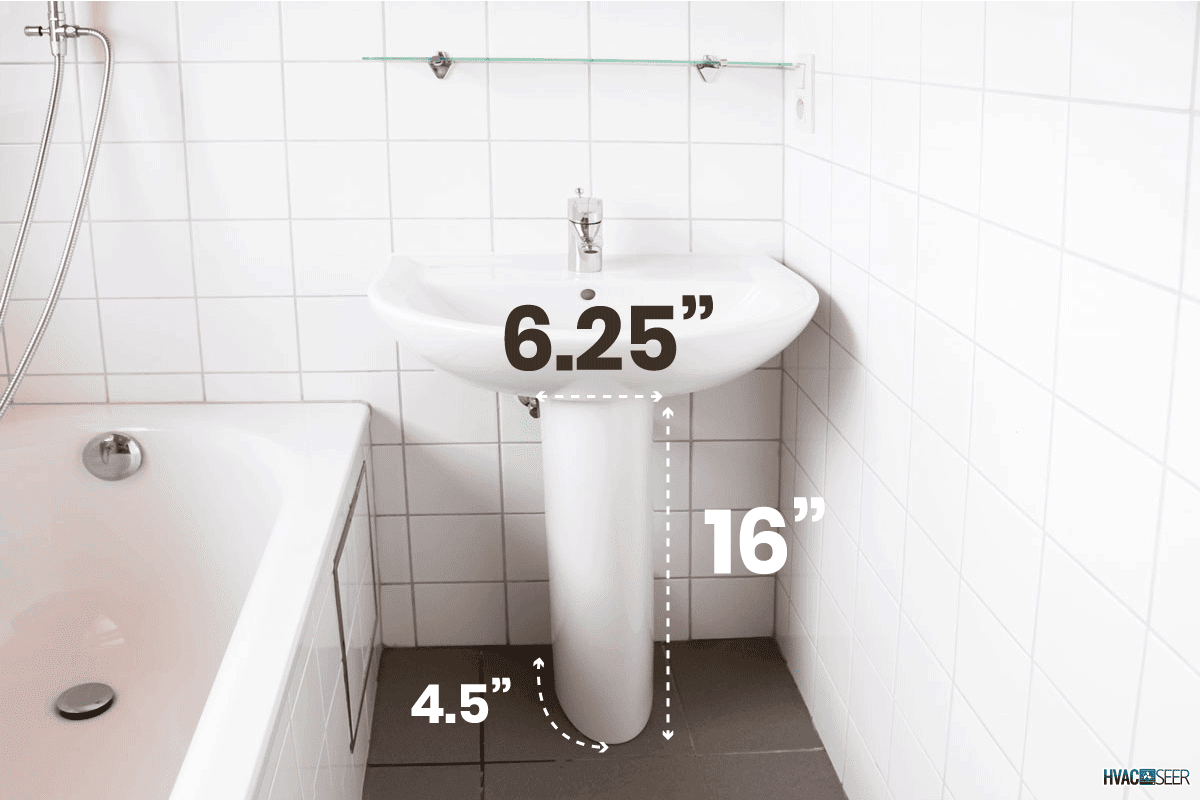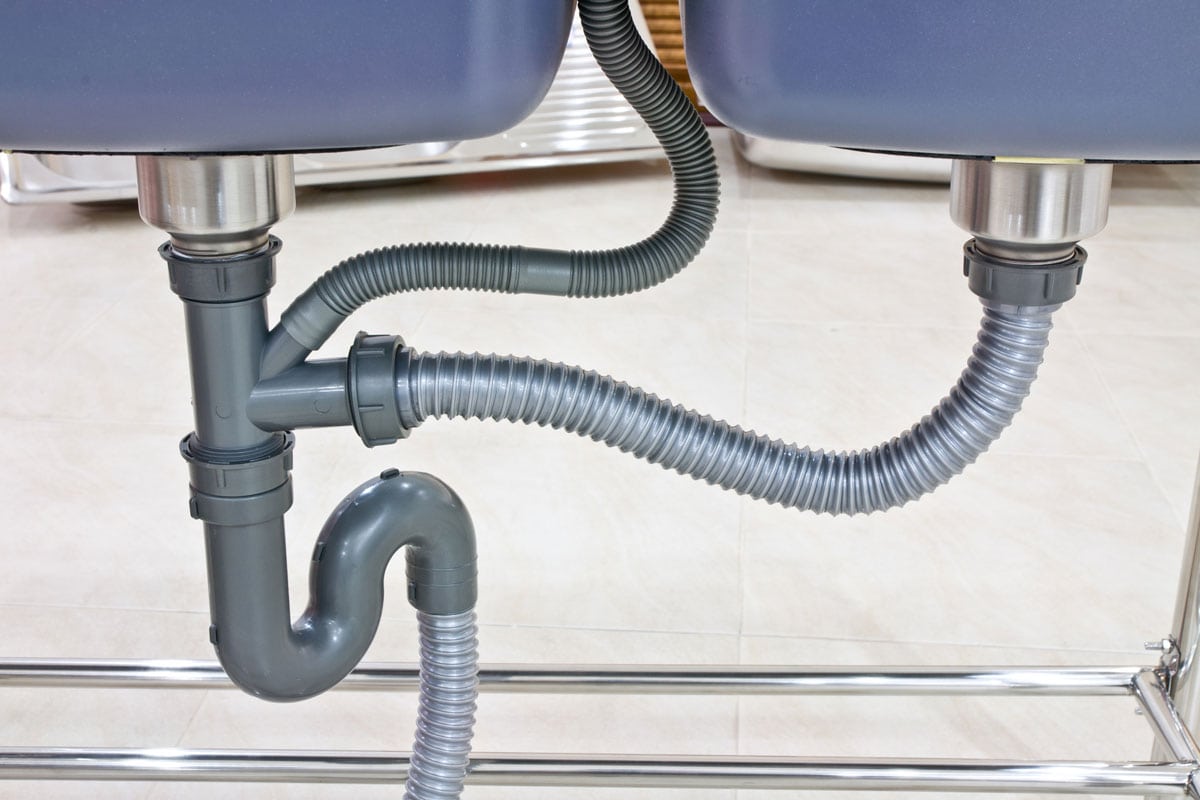Figuring out the right way to install plumbing in your home can sometimes be stressful. For example, do you have a fixture you need to add to a room, but you're worried the pipes will show? Is it okay to have plumbing pipes out in the open? Should they be hidden?
Luckily, we've done plenty of searching and have the answer below!
Depending on the design of your home and when the plumbing was installed, it's possible to have the pipes exposed. Generally, exposed plumbing isn't common, but it can happen in older properties or those with an "industrial" look.
For example, you may see plumbing pipes in modern showers, standalone tubs, sinks, and other large fixtures throughout a property. Therefore, we don't see an issue with this.
As we start this post, we will cover all things plumbing and discuss whether having exposed pipes is a good idea. We're here to offer guidance if you're designing your bathroom or kitchen or installing another type of plumbing. With that said, let's dive right in!
Is It Okay To Have Exposed Plumbing Pipes?

Since not all plumbing is hidden behind the walls in your home, you may need to install it differently. Therefore, your plumbing pipes may be exposed: but is that okay?
Yes! Exposing piping is fine if you want to go for an industrial aesthetic or don't feel like cutting through the flooring or walls.
Generally, designers do this in more modern spaces or those they want to preserve. For example, if you have a walk-in shower and don't want to hide the plumbing, you can create a waterfall effect with your showerhead.
According to Kellermeier Plumbing, many people run the pipes from their various bathroom fixtures out in the open. Especially in older properties, it's common to see this happen.
In contrast, newer builds will sometimes also expose plumbing pipes to give the space a grungy or industrial energy, so this isn't always out of necessity.
It may work better for you to install your plumbing with the pipes exposed versus hidden, so this is a per-basis decision you'll need to make.
Why Do People Leave Their Plumbing Pipes Exposed?
One of the main reasons people leave their plumbing pipes exposed is that they're in an older home. As we said, many old or historic properties don't have their plumbing fixtures attached in a secretive way.
Therefore, you'll see the pipe running to a standalone tub or underneath the sink. This is also sometimes done on purpose in newer homes and hotels.
In recent years, the grungy aesthetic has taken the design world by storm: causing people to venture outwards with their pipes.
However, this comes with mixed feelings, as exposed pipes can be easier to damage. Again, leaving plumbing pipes exposed is also sometimes your only option: so it's not always for aesthetics.
Regardless, you want to make sure leaving the piping exposed in your bathroom makes sense and won't put any fixtures in your space in danger.
Yes, an exposed pipe below your sink or leading into your shower may look cool: but you don't want to do this if your plumbing becomes vulnerable to leaks.
What Are The Pros And Cons Of Exposed Plumbing Pipes?

For anyone debating between exposing or hiding their plumbing pipes, these choices come with pros and cons. First, let's start with the benefits of keeping your pipes out in the open:
- Can give your space an industrial aesthetic
- Your pipes will be easier to repair and access
- You don't have to cut into any walls or flooring
- It may be easier to install standalone fixtures
Now that you see the benefits of having exposed plumbing pipes let's discuss the cons:
- Exposed pipes are more susceptible to damage (scratching, bumping, breaking)
- Your pipes may be distracting in your bathroom/kitchen design
- Leaks from your plumbing can be more severe
- Exposed piping may hurt your home's resale value
So, looking at these pros and cons, you can see this decision comes down to your space. If you want a grungier look and don't mind the heightened risk of pipe damage, then it's fine to keep them out of the wall.
However, if you have young children or pets or tend to bump around: your pipes could become hazardous. Suppose somebody trips and uses the exposed pipe leading to the sink/shower/tub as a handrail.
Doing this could loosen your pipe enough to spew water, flooding your house. Again, this is more of a dramatic situation, but it's happened before.
Sometimes, it's better to prioritize functionality versus "how" something looks.
Should Plumbing Pipes Be Behind The Wall?

Overall, many plumbing experts recommend keeping your pipes behind a wall. That's because when your pipes are covered, that offers them additional protection.
As we said before, keeping your plumbing pipes out of site can give your bathroom more of an elevated design and prevent leaks and other damage.
According to Reimer HVAC, safeguarding your pipes within a wall helps them last longer and keeps everyday activities from affecting them.
From a safety standpoint, you can also expect hidden plumbing to be a better choice if you're clumsy or have younger housemates.
Exposed pipes, although cool-looking, aren't always insulated well enough and can become a major safety hazard if you damage them. Especially if your pipes are in exterior walls, you want to prioritize insulting them correctly.
Even the strongest pipes need protection from the elements or physical traffic.
Is It Better To Cover Plumbing Pipes?
Yes. You want to try and cover plumbing pipes, whether they're in the wall or showing. According to experts, pipe covers are the cheapest way to do this.
Especially for copper pipes, you want to make sure to cover them with something hardy. Certain metals deteriorate faster than others: and copper is a prime example.
Therefore, a good plan is to invest in a few covers for your pipes in-wall or out in the open. If you want a more DIY approach, you may even build a shelf to cover your exposed plumbing, which can double as extra storage.
More shelving is a top priority for many spaces, so why not kill two birds with one stone? Again, you want your main focus to be on the safety and security of your plumbing, as damage to it can cost thousands of dollars.
If you can hide your pipes in a nearby wall, that's our top suggestion before following a DIY route. Regardless, you need to insulate your pipes well and make sure everything is tightly sealed before finishing your cover-up.
Undersink Molded Vinyl Tubular P-Trap Piping Cover

This under-sink pipe cover is made with Polyvinyl Chloride, is white, protects pipes, adds cushioning to your plumbing, can be reused, measures 16 x 6.25 x 4.5 inches, and comes in a few fixture/size options.
Follow this link to see it on Amazon.
What Happens If I Bump Into My Exposed Plumbing Pipes?

If you bump into an exposed plumbing pipe, it shouldn't cause too much damage. That said, you might see a leak develop if you hit the exposed pipe hard enough, so this can be serious.
As we mentioned, exposed piping in a bathroom is the most common. Therefore, if you were to hit your pipe with a mop or vacuum or even fall into it: you could cause damage.
One of the main concerns with having exposed plumbing is the integrity of each fixture's structure. If your pipe loosens over time because of enough trauma, that's when leaks and flooding happen.
Again, it would take a pretty blunt amount of force to loosen a plumbing pipe, but that's not to say this is impossible. So, if you're worried about this happening, we recommend avoiding exposing your piping.
Or, at the very least, try and place something around or in front of your plumbing to protect it.
Can I Hang Things From An Exposed Pipe?
No. We do not recommend ever hanging items from an exposed pipe. Even though the idea of using your exposed plumbing pipe to dry clothes or hang plants/decor is tempting: this can damage your pipe(s).
According to experts, if your pipe is older and already damaged, hanging something from it could cause it to burst.
That's because your pipe's resilience to additional weight and pressure decreases over time. As your plumbing gets older, you can't expect it to bounce back from blunt force trauma or added weight.
However, some professionals claim that newer pipes that are structurally sound may be able to hold lightweight items and become more decorative.
Fite Plumbing claims that you can sometimes get away with using exposed plumbing pipes as decoration: painting them and creating a fully-decorated space.
Again, the general consensus on this shifts towards no, so we don't recommend getting wild with your interior decorating. You might be able to hang a towel or something light on your exposed pipes without problems, but don't test your luck.
To Finish It All Up
Whether you have an exposed plumbing pipe or want to use this design in your home, it's always good to know the pros and cons. We found that you can leave plumbing pipes out in the open, although the chances of them becoming damaged is higher.
In contrast, hiding your plumbing in the wall is the standard, so you might prefer to stick to that installation instead of having an exposed set of pipes.
Generally, you see exposed plumbing in older properties lacking wall space, but it's also popular in newer "grunge-industrial" rooms.
Made it to the end? Check out these helpful related HVAC articles below:
Can I Use Expanding Foam Around Heating Pipes?
What Size Copper Pipe Do I Need For Water Lines?
Basic Plumbing Terminology For Home Maintenance – What Should You Know?

